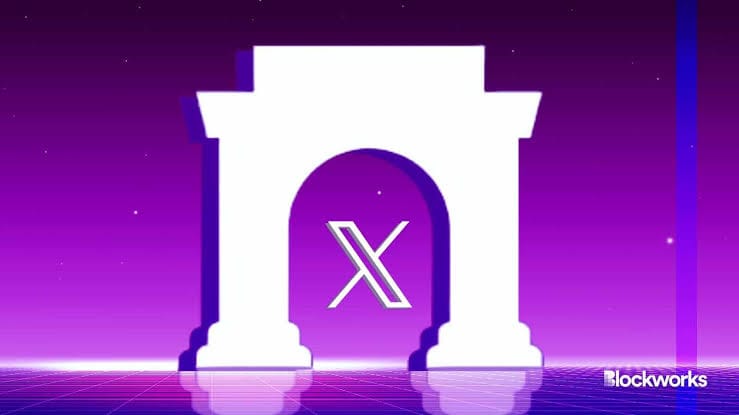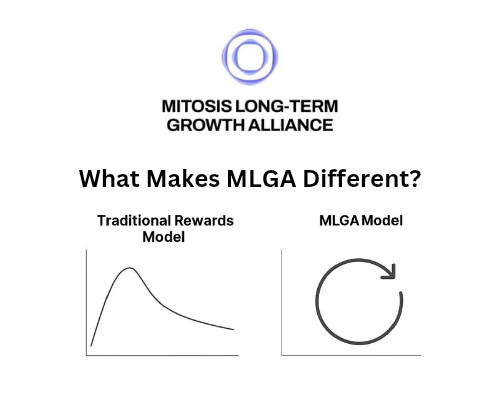Social Platforms Becoming Crypto‑Powered App Stores: The Rise of Farcaster and XMoney

The way we use social media is evolving fast. Once dominated by centralized giants like Meta and X—with their closed systems and ad‑heavy models—today’s platforms are shifting toward decentralized, blockchain‑powered ecosystems. These new platforms not only offer social feeds, but also function more like app stores, empowering users, developers, and creators. Two standouts in this movement are Farcaster and XMoney, each bringing unique strengths and challenges in the unfolding Web3 era.
From Web2 to Web3
Web2 platforms—Facebook, X, Instagram—are centralized: they control your data, decide what content you see, and earn revenue through ads. That model is increasingly criticized for data misuse, censorship, and lack of user control.
Web3, powered by blockchain, flips the script. It gives users sovereignty over their data, promotes transparent governance, and enables direct monetization. Take the idea of social platforms doubling as app stores: developers can build “mini‑apps” inside social feeds, users own their identity and data, and everyone benefits economically from participation.
Farcaster: A Truly Decentralized Social App Platform
Founded in 2020 by Dan Romero and Varun Srinivasan (ex‑Coinbase execs), Farcaster is a decentralized social protocol built on Ethereum’s Layer‑2 networks—Optimism and Base. Unlike closed systems, Farcaster invites developers to build apps on top of its protocol, while users keep full control of their identity and content.
Core Features of Farcaster
- Hybrid Architecture
Accounts and identity verification are on‑chain, while interactions like posts are kept off‑chain to save costs—offering both transparency and efficiency. A nominal fee (around $5 to register, $2/year for storage) discourages spam and promotes accountability. - Frames: In‑Feed Mini‑Apps
Introduced in January 2024, Frames let developers embed miniature apps directly into posts—such as NFT minting, micro‑games, or purchases. This makes Farcaster feel like a crypto app store, allowing users to interact with full mini‑apps without leaving their feed. - Community‑Driven Environments
“Channels” are like topic‑focused social groups. Instead of algorithmic feeds, users actively control their experience. Talk of decentralized governance is growing: users hope to directly decide features and fees using protocol‑level voting. - Snapchain: Built for Scale
Launched in April 2025, Snapchain is a custom social blockchain capable of 10,000+ actions per second (e.g., likes/posts), with sharded architecture to serve millions of users efficiently. A low-cost $2/year gives users access to up to 500 transactions per hour.
Adoption and Momentum
By early 2025, Farcaster reached around 229,000 monthly active users, with daily new sign-ups peaking at 15,000. The Frames feature sparked massive growth: daily active users jumped from about 2,400 to over 19,000, and daily revenue soared from $2,500 to $39,000. The protocol’s total signups now represent nearly 800,000 addresses, with cumulative revenue exceeding $2.5 million.
Why It Matters
Farcaster is shaping up as a true Web3 social app platform—where developers ship interactive tools, users engage directly, and nothing is gated or siloed. Its Frames and Snapchain features are setting a new standard for scalable, on‑chain social experiences.
But it’s not without challenges. Warpcast—one of the ecosystem’s main apps—accounts for half of signups, raising centralization concerns. And without a native token, Farcaster hasn’t yet climbed to the virtuous growth loops seen in other crypto projects. The DEGEN token and a tipping mechanism help, but broader ecosystem incentives are still underdeveloped.
XMoney: Crypto Features Inside a Social Internet Giant
While Farcaster builds from the ground up on decentralization, XMoney represents a different path to Web3—one built within an existing, centralized social platform. Under Elon Musk’s total rebrand of Twitter to X, the platform has ambitions to become a “super‑app,” like China’s WeChat.
XMoney’s Crypto Features
- Integrated Payments and Tipping
XMoney will operate as an embedded digital wallet within X, allowing users to make peer‑to‑peer crypto transactions—with Bitcoin, Ethereum, or others—and send tips with ease. - Monetization Tools for Creators
Beyond tips, creators can set up crypto‑based subscriptions or token‑gated content—allowing direct monetization via the X ecosystem. - App‑Store‑Like Potential
Though not fully open to developers yet, XMoney could evolve to allow third‑party developers to create mini‑apps inside X’s feed, similar to Farcaster Frames. - Web2 Meets Web3
X’s familiar interface offers mainstream users a gentler on‑ramp into crypto—wrapping wallet creation, transactions, and tipping into a seamless, Web2-like experience.
Progress and Prospects
XMoney is already licensed in 41 US states as a money transmitter, with partners including Citibank, Stripe, and Adyen. A Visa partnership enables instant, peer‑to‑peer payments tied to debit cards, functioning similarly to Venmo or Zelle. CEO Linda Yaccarino has confirmed that beta testing is underway, with full deployment expected later in 2025. Reports also suggest X is exploring its own branded physical debit card tied to the XMoney wallet.
Challenges Ahead
X remains centralized, meaning user data and transactions are still controlled by the platform. Persistent issues with spam and bots pose a risk to its crypto features if left unchecked. Regulatory scrutiny around crypto payments, money laundering, and financial licensing is another potential roadblock—especially in the U.S.
Comparing Farcaster and XMoney
| Feature | Farcaster | XMoney (X Platform) |
|---|---|---|
| Architecture | Decentralized protocol on Ethereum L2 | Centralized social platform with embedded crypto |
| Core Innovation | Frames (in‑feed mini‑apps), Snapchain scalability | Crypto payments, tipping, in‑platform wallet, potential mini‑apps |
| User Base | ~229K monthly actives (March 2025) | ~600 million monthly users overall; crypto‑active subset unknown |
| Monetization | NFTs, subscriptions, tipping (DEGEN token) | Tipping, subscriptions, debit card tied wallet |
| Developer Ecosystem | Open, permissionless, vibrant | Early stages, likely permissioned and centralized |
| Audience Focus | Crypto‑native users and Web3 developers | Mainstream users and creators, with crypto interest |
Farcaster leads on decentralization and innovation, with a strong developer ecosystem. XMoney leverages scale, reach, and a familiar interface—but remains centrally controlled.
What This Means for Users, Developers, and the Crypto Ecosystem
For users:
You gain more control over data and monetization—especially on Farcaster. XMoney could make crypto mainstream by simplifying everything inside a single app. But both have trade‑offs: Farcaster’s crypto onboarding is still complex; XMoney raises privacy and centralization concerns.
For developers:
Farcaster offers an open, permissionless platform where developers can build and monetize directly. XMoney might eventually open up to developers, but likely under more rigid control.
For the crypto ecosystem:
Social-financial convergence could push crypto deeper into daily life. Token utility may grow, more volume could enter NFT and DeFi markets, and user-friendly UX designs might onboard a new generation. But regulators are watching closely, particularly around payments and user protections.
Hurdles and What Comes Next
Farcaster must find the right balance: its crypto‑centric tools appeal to niche users but may deter broader audiences. The lack of a native growth token limits its ability to create strong network effects. The DEGEN tipping economy shows promise, but isn’t a full solution yet.
XMoney, meanwhile, is moving quickly—but must fix long‑standing issues with bot activity and prepare for a wave of financial scrutiny. Its centralized nature may also clash with the ethos of the Web3 space it wants to serve.
The broader landscape is heating up. Competitors like Bluesky, Lens, and Mastodon are experimenting with various flavors of decentralized social networking, and legacy players like Meta are also exploring crypto integrations.
Final Thoughts
Farcaster and XMoney represent two very different yet converging visions for the future of social media:
- Farcaster is decentralized by design, developer-first, and focused on open innovation through mini‑apps and scalable infrastructure like Snapchain.
- XMoney, embedded in one of the world’s largest platforms, is using crypto to reshape finance and creator monetization—aiming for mass adoption by simplifying the entire experience.
The idea of your social feed becoming an interactive app store—where you post, transact, and earn—is no longer a fantasy. These platforms are making it real. As they mature, the lines between social, financial, and on-chain interaction will blur—perhaps permanently.
References













Comments ()